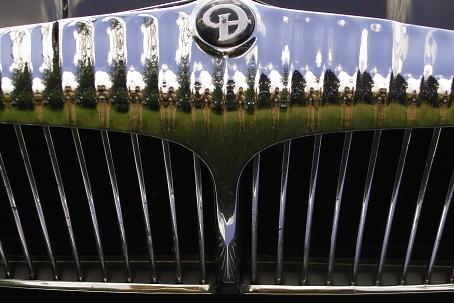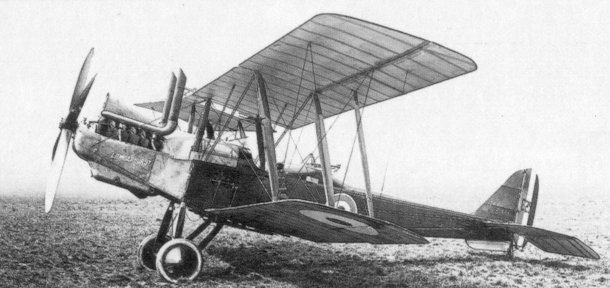|
Royal Aircraft Factory R.E.8
The Royal Aircraft Factory R.E.8 was a British two-seat biplane reconnaissance and bomber aircraft of the First World War designed and produced at the Royal Aircraft Factory. It was also built under contract by Austin Motors, Daimler, Standard Motors, Siddeley-Deasy and the Coventry Ordnance Works. Intended as a replacement for the vulnerable B.E.2, the R.E.8 was widely regarded as more difficult to fly and gained a reputation in the Royal Flying Corps for being "unsafe" that was never entirely dispelled. Although eventually it gave reasonably satisfactory service, it was never an outstanding combat aircraft. Nonetheless, it remained the standard British reconnaissance and artillery observation aircraft from mid-1917 to the end of the war, serving alongside the rather more popular Armstrong Whitworth F.K.8. More than 4,000 R.E.8s were eventually produced; these aircraft saw service in a range of different theatres, including Italy, Russia, Palestine and Mesopotamia, as we ... [...More Info...] [...Related Items...] OR: [Wikipedia] [Google] [Baidu] |
Siddeley-Deasy
The Siddeley-Deasy Motor Car Company Limited was a British automobile, aero engine and aircraft company based in Coventry in the early 20th century. It was central to the formation, by merger and buy-out, of the later Armstrong Siddeley Motor and Armstrong Whitworth Aircraft companies. History The Deasy Motor Car Manufacturing Company Limited was founded by Henry Hugh Peter Deasy in the factory that had previously been used to manufacture Iden cars. Deasy left in 1908 following disagreements with his Chief Engineer. In 1910 J D Siddeley took up the appointment of managing director having moved to Deasy in 1909 from managing Wolseley. The shareholders were so pleased with his success that on 7 November 1912 they unanimously agreed to change the company's name to The Siddeley-Deasy Motor Car Company Limited. Siddeley's name had been added to the product's radiator in 1912.Bill Smith, ''Armstrong Siddeley Motors'' Dorchester, Veloce, 2006; p. 55; Siddeley-Deasy grew rapidly ... [...More Info...] [...Related Items...] OR: [Wikipedia] [Google] [Baidu] |
Daimler Company
The Daimler Company Limited ( ), prior to 1910 The Daimler Motor Company Limited, was an independent British motor vehicle manufacturer founded in London by H. J. Lawson in 1896, which set up its manufacturing base in Coventry. The company bought the right to the use of the Daimler name simultaneously from Gottlieb Daimler and Daimler-Motoren-Gesellschaft of Cannstatt, Germany. After early financial difficulty and a reorganisation of the company in 1904, the Daimler Motor Company was purchased by Birmingham Small Arms Company (BSA) in 1910, which also made cars under its own name before the Second World War. In 1933, BSA bought the Lanchester Motor Company and made it a subsidiary of Daimler Company. Daimler was awarded a Royal Warrant to provide cars to the British monarch in 1902; it lost this privilege in the 1950s after being supplanted by Rolls-Royce. Daimler occasionally used alternative technology: the Knight engine which it further developed in the early twenti ... [...More Info...] [...Related Items...] OR: [Wikipedia] [Google] [Baidu] |
V12 Engine
A V12 engine is a twelve-cylinder piston engine where two banks of six cylinders are arranged in a V configuration around a common crankshaft. V12 engines are more common than V10 engines. However, they are less common than V8 engines. The first V12 engine was built in 1904 for use in racing boats. Due to the balanced nature of the engine and the smooth delivery of power, V12 engines were found in early luxury automobiles, boats, aircraft, and tanks. Aircraft V12 engines reached their apogee during World War II, following which they were mostly replaced by jet engines. In Formula One racing, V12 engines were common during the late 1960s and early 1990s. Applications of V12 engines in the 21st century have been as marine engines, in railway locomotives, as large stationary power as well as in some European sports and luxury cars. Design Balance and smoothness Each bank of a V12 engine essentially functions as a straight-six engine, which by itself has perfect primary a ... [...More Info...] [...Related Items...] OR: [Wikipedia] [Google] [Baidu] |
RAF 4
The RAF 4 was a British air-cooled, V12 engine developed for aircraft use during World War I. Based on the eight–cylinder RAF 1 it was designed by the Royal Aircraft Factory but produced by the two British companies of Daimler and Siddeley-Deasy. The RAF 5 was a pusher version of the same engine.Gunston, 1989, p. 156. Turbocharger A turbocharged experimental version of the RAF 4, the RAF 4d, was developed using a Rateau exhaust-driven turbocharger. The engine was test-flown in a R.E.8, but the turbocharging experiments were abandoned after the turbine failed on 4 May 1918.Hare 1990, p. 265 Variants ;RAF 4 :1914 - Prototype engine, 140 horsepower (104 kW). ;RAF 4a :1917 - Main production variant, 150 horsepower (112 kW). 3,608 built. ;RAF 4d :1916 - 180 horsepower (134 kW), experimental supercharger installation. 16 built. ;RAF 4e :1917 - 240 horsepower (180 kW), strengthened cylinders and enlarged valves. ;RAF 5 :1915 - 150 horsepower (112 kW), pusher version with fan-co ... [...More Info...] [...Related Items...] OR: [Wikipedia] [Google] [Baidu] |
Aerial Reconnaissance
Aerial reconnaissance is reconnaissance for a military or strategic purpose that is conducted using reconnaissance aircraft. The role of reconnaissance can fulfil a variety of requirements including artillery spotting, the collection of imagery intelligence, and the observation of enemy maneuvers. History Early developments After the French Revolution, the new rulers became interested in using the balloon to observe enemy manoeuvres and appointed scientist Charles Coutelle to conduct studies using the balloon ''L'Entreprenant'', the first military reconnaissance aircraft. The balloon found its first use in the 1794 conflict with Austria, where in the Battle of Fleurus they gathered information. Moreover, the presence of the balloon had a demoralizing effect on the Austrian troops, which improved the likelihood of victory for the French troops. To operate such balloons, a new unit of the French military, the French Aerostatic Corps, was established; this organisa ... [...More Info...] [...Related Items...] OR: [Wikipedia] [Google] [Baidu] |
Western Front (World War I)
The Western Front was one of the main theatres of war during the First World War. Following the outbreak of war in August 1914, the German Army opened the Western Front by invading Luxembourg and Belgium, then gaining military control of important industrial regions in France. The German advance was halted with the Battle of the Marne. Following the Race to the Sea, both sides dug in along a meandering line of fortified trenches, stretching from the North Sea to the Swiss frontier with France, which changed little except during early 1917 and in 1918. Between 1915 and 1917 there were several offensives along this front. The attacks employed massive artillery bombardments and massed infantry advances. Entrenchments, machine gun emplacements, barbed wire and artillery repeatedly inflicted severe casualties during attacks and counter-attacks and no significant advances were made. Among the most costly of these offensives were the Battle of Verdun, in 1916, with a combined 700 ... [...More Info...] [...Related Items...] OR: [Wikipedia] [Google] [Baidu] |
Mesopotamian Campaign
The Mesopotamian campaign was a campaign in the Middle Eastern theatre of World War I fought between the Allies represented by the British Empire, troops from Britain, Australia and the vast majority from British India, against the Central Powers, mostly the Ottoman Empire. Background The Ottoman Empire had conquered the region in the early 16th century, but never gained complete control. Regional pockets of Ottoman control through local proxy rulers maintained the Ottomans' reach throughout Mesopotamia (modern Iraq). With the turn of the 19th century came reforms. Work began on a Baghdad Railway in 1888; by 1915 it had only four gaps, and travel time from Istanbul to Baghdad had fallen to 21 days. The Anglo-Persian Oil Company (APOC) had obtained exclusive rights to petroleum deposits throughout the Persian Empire, except in the provinces of Azerbaijan, Ghilan, Mazendaran, Asdrabad, and Khorasan.The Encyclopedia Americana, 1920, v.28, p.403 In 1914, months before the war b ... [...More Info...] [...Related Items...] OR: [Wikipedia] [Google] [Baidu] |
Eastern Front (World War I)
The Eastern Front or Eastern Theater of World War I (german: Ostfront; ro, Frontul de răsărit; russian: Восточный фронт, Vostochny front) was a theater of operations that encompassed at its greatest extent the entire frontier between Russia and Romania on one side and Austria-Hungary, Bulgaria, the Ottoman Empire, and Germany on the other. It stretched from the Baltic Sea in the north to the Black Sea in the south, involved most of Eastern Europe, and stretched deep into Central Europe as well. The term contrasts with "Western Front", which was being fought in Belgium and France. During 1910, Russian General Yuri Danilov developed "Plan 19" under which four armies would invade East Prussia. This plan was criticised as Austria-Hungary could be a greater threat than the German Empire. So instead of four armies invading East Prussia, the Russians planned to send two armies to East Prussia, and two armies to defend against Austro-Hungarian forces invading from Gal ... [...More Info...] [...Related Items...] OR: [Wikipedia] [Google] [Baidu] |
Italian Campaign (World War I)
The Italian front or Alpine front ( it, Fronte alpino, "Alpine front"; in german: Gebirgskrieg, "Mountain war") involved a series of battles at the border between Austria-Hungary and Italy, fought between 1915 and 1918 in the course of World War I. Following secret promises made by the Allies in the 1915 Treaty of London, Italy entered the war aiming to annex the Austrian Littoral, northern Dalmatia, and the territories of present-day Trentino and South Tyrol. Although Italy had hoped to gain the territories with a surprise offensive, the front soon bogged down into trench warfare, similar to that on the Western Front in France, but at high altitudes and with very cold winters. Fighting along the front displaced much of the local population, and several thousand civilians died from malnutrition and illness in Italian and Austro-Hungarian refugee-camps. The Allied victory at Vittorio Veneto, the disintegration of the Habsburg empire, and the Italian capture of Trento and Tr ... [...More Info...] [...Related Items...] OR: [Wikipedia] [Google] [Baidu] |
Armstrong Whitworth F
Armstrong may refer to: Places * Armstrong Creek (other), various places Antarctica * Armstrong Reef, Biscoe Islands Argentina * Armstrong, Santa Fe Australia * Armstrong, Victoria Canada * Armstrong, British Columbia * Armstrong, Ontario * Armstrong, Thunder Bay District, Ontario * Armstrong, Ontario (Indian settlement) United States * Armstrong, California * Armstrong, Delaware * Armstrong, Florida * Armstrong, Georgia * Armstrong, Illinois * Armstrong, Indiana * Armstrong, Iowa * Armstrong, Minnesota * Armstrong, Missouri * Armstrong, Oklahoma * Armstrong, Texas * Armstrong, Wisconsin * Armstrong County, Pennsylvania * Armstrong County, Texas * Armstrong Lake (Blue Earth County, Minnesota), a lake in Minnesota * Armstrong Township, Vanderburgh County, Indiana * Armstrong Township, Pennsylvania (other), more than one, including ** Armstrong Township, Indiana County, Pennsylvania ** Armstrong Township, Lycoming County, Pennsylvania * Louis Armstrong New ... [...More Info...] [...Related Items...] OR: [Wikipedia] [Google] [Baidu] |
Air Observation Post
Air Observation Post (AOP) is an aeroplane or helicopter used in the role of artillery spotter by the British Army and Commonwealth forces. In this role, either the pilot of the aircraft or another crew member acts as an observer watching for targets on the ground, and/or as a Forward Observation Officer directing the fire, by radio, of artillery on the ground (or calling in tactical ground-attack aircraft).History of AOat forcesreunited.org.uk Background In the interwar period, the role of artillery spotting was mixed with reconnaissance and ground attack to be served by Army Co-operation (AC) squadrons. At the beginning of World War II their standard aircraft was the Westland Lysander. This aircraft had a high level of losses with the British Expeditionary Force during the Battle of France (118 shot down out of a total of 175 deployed). This demonstrated the unsuitability of the Lysander for Army Co-operation and called into question the whole concept. These RAF squadrons conv ... [...More Info...] [...Related Items...] OR: [Wikipedia] [Google] [Baidu] |
.jpg)








